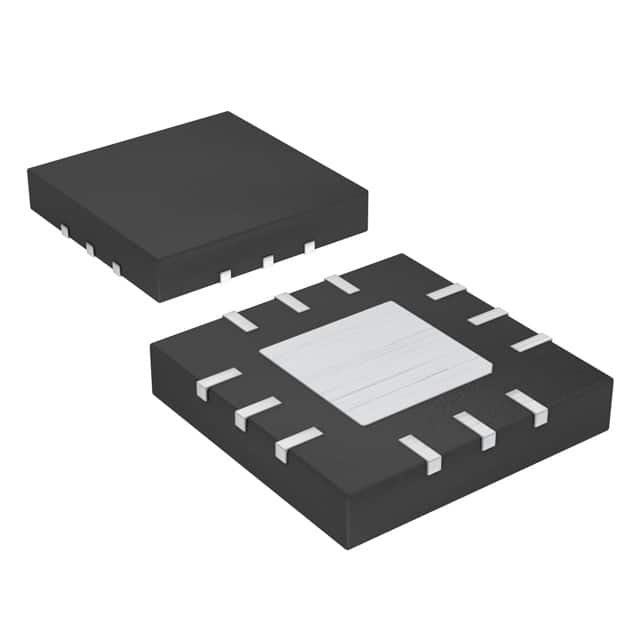Xem thông số kỹ thuật để biết chi tiết sản phẩm.

MAX1224CTC+T
Product Overview
Category
MAX1224CTC+T belongs to the category of integrated circuits (ICs).
Use
This product is commonly used in electronic devices for various applications, including data acquisition systems, industrial control systems, and instrumentation.
Characteristics
- High precision: MAX1224CTC+T offers high-resolution analog-to-digital conversion, ensuring accurate measurement and data acquisition.
- Low power consumption: This IC is designed to operate with minimal power consumption, making it suitable for battery-powered devices.
- Small package size: The MAX1224CTC+T comes in a compact package, allowing for space-efficient integration into electronic designs.
- Wide operating temperature range: It can operate reliably across a wide temperature range, making it suitable for both indoor and outdoor applications.
Package and Quantity
The MAX1224CTC+T is available in a small outline integrated circuit (SOIC) package. It is typically sold in reels or tubes containing a specific quantity, such as 250 or 1000 units per package.
Specifications
- Resolution: 12 bits
- Input voltage range: 0V to Vref
- Conversion rate: up to 200ksps (thousand samples per second)
- Supply voltage: 2.7V to 5.25V
- Operating temperature range: -40°C to +85°C
- Interface: Serial Peripheral Interface (SPI)
Pin Configuration
The MAX1224CTC+T has a total of 20 pins, which are assigned specific functions. Here is the detailed pin configuration:
- VDD: Power supply input
- AGND: Analog ground
- REFOUT: Reference voltage output
- REF: Reference voltage input
- IN0 to IN11: Analog input channels
- DGND: Digital ground
- CS: Chip select input
- SCLK: Serial clock input
- SDI: Serial data input
- SDO: Serial data output
- EOC: End of conversion output
- SHDN: Shutdown control input
Functional Features
- High-resolution ADC: The MAX1224CTC+T provides 12-bit resolution, allowing for precise measurement and accurate data acquisition.
- Low power consumption: It operates in low-power modes, reducing energy consumption and extending battery life in portable devices.
- Flexible input configuration: This IC supports up to 12 analog input channels, enabling versatile signal acquisition.
- SPI interface: The serial peripheral interface allows for easy integration with microcontrollers and other digital devices.
Advantages and Disadvantages
Advantages
- High precision and accuracy
- Low power consumption
- Compact package size
- Wide operating temperature range
- Versatile input configuration
Disadvantages
- Limited number of analog input channels (up to 12)
- Requires an external reference voltage source
Working Principles
The MAX1224CTC+T is based on the successive approximation register (SAR) architecture. It converts analog signals into digital data by comparing the input voltage with a reference voltage and iteratively approximating the digital representation until the desired resolution is achieved.
Application Field Plans
The MAX1224CTC+T finds applications in various fields, including: 1. Data acquisition systems: Used to measure and convert analog signals from sensors or transducers into digital data for further processing. 2. Industrial control systems: Enables precise monitoring and control of industrial processes by converting analog signals into digital values. 3. Instrumentation: Used in scientific instruments and test equipment to acquire accurate measurements.
Alternative Models
For users seeking alternative options, here are some detailed and complete models that can be considered: - MAX1225CTI+: Similar to MAX1224CTC+T but offers 16-bit resolution for higher precision applications. - ADS1115: A 16-bit ADC from Texas Instruments with a built-in programmable gain amplifier (PGA) for signal conditioning.
In conclusion, the MAX1224CTC+T is a high-precision, low-power integrated circuit commonly used in data acquisition systems, industrial control systems, and instrumentation. Its compact size, wide operating temperature range, and versatile input configuration make it suitable for various applications. However, it has limitations in terms of the number of analog input channels and requires an external reference voltage source.
Liệt kê 10 câu hỏi và câu trả lời thường gặp liên quan đến ứng dụng MAX1224CTC+T trong giải pháp kỹ thuật
Sure! Here are 10 common questions and answers related to the application of MAX1224CTC+T in technical solutions:
Q1: What is MAX1224CTC+T? A1: MAX1224CTC+T is a specific model of analog-to-digital converter (ADC) manufactured by Maxim Integrated. It is designed for high-precision data acquisition applications.
Q2: What is the resolution of MAX1224CTC+T? A2: MAX1224CTC+T has a resolution of 12 bits, meaning it can convert an analog input into a digital value with 4096 possible levels.
Q3: What is the operating voltage range of MAX1224CTC+T? A3: The operating voltage range of MAX1224CTC+T is typically between 2.7V and 5.25V.
Q4: What is the maximum sampling rate of MAX1224CTC+T? A4: The maximum sampling rate of MAX1224CTC+T is 200 kilosamples per second (ksps).
Q5: Can MAX1224CTC+T be used in low-power applications? A5: Yes, MAX1224CTC+T has a low-power mode that allows it to operate with reduced power consumption, making it suitable for battery-powered devices.
Q6: Does MAX1224CTC+T support differential inputs? A6: Yes, MAX1224CTC+T supports both single-ended and differential inputs, providing flexibility in connecting various types of sensors or signals.
Q7: Is MAX1224CTC+T compatible with microcontrollers? A7: Yes, MAX1224CTC+T can be easily interfaced with microcontrollers through standard communication protocols such as SPI (Serial Peripheral Interface) or I2C (Inter-Integrated Circuit).
Q8: What is the temperature range for MAX1224CTC+T? A8: The operating temperature range for MAX1224CTC+T is typically between -40°C and +85°C.
Q9: Can MAX1224CTC+T be used in industrial applications? A9: Yes, MAX1224CTC+T is suitable for a wide range of industrial applications, including process control, instrumentation, and data logging.
Q10: Are evaluation boards available for MAX1224CTC+T? A10: Yes, Maxim Integrated provides evaluation boards and reference designs for MAX1224CTC+T, which can help developers quickly prototype and evaluate its performance in their specific applications.
Please note that the answers provided here are general and may vary depending on the specific requirements and conditions of each application.

